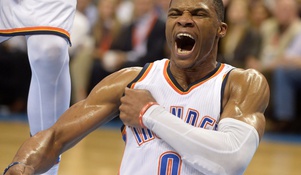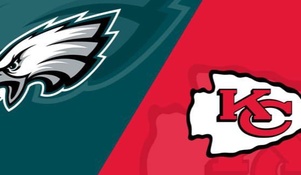What Is A Catch?
The NFL and the game of football are wildly unpredictable. Whether it be coaches getting fired, players being suspended, teams changing location, or one loss by the Oakland Raiders completely shifting the AFC playoff picture, the NFL never ceases to have excitement. A few parts though, remain as absolutes in the NFL, so we believe. Offense, defense, and special teams are the major components of the game as we know it. Players will be passing, running, blocking, tackling, and catching. All very simple, right? Quarterbacks throw the ball to their receivers, and occasionally to the defense. Running backs try to hit the holes and rush for as many yards as possible. Offensive lineman hold down the fort, opening up gaps for the running backs and trying to keep their quarterback up-right. Even wide receivers, running backs, and tight ends block for certain plays. Defense will always be going after the ball, attempting to take it away, or tackling the ball carrier, getting them to the ground. What’s not so simple? Catching.
There may never be a real explanation for the way the NFL has designed the “catch rule”, eliminating historic plays from the record, that ultimately changed games. It is unfortunate when the casual fan, or even a professional football player must ask “what is a catch?”. Organized football as a business has been in existence since 1920 when it was called the American Professional Football Association. In 1922, they changed their name to the National Football League, and throughout time, adding more teams and involving more cities. Through all of this change and evolution, the one major component of the game never changed, even catching. It wasn’t until recent history that the NFL had it brought into question what a catch really is, and honestly, it’s quite ridiculous. On September 12, 2010, everything that was once black and white when deciding a catch, became a major gray area. This was the day a game winning touchdown was stolen from Calvin Johnson against the Chicago Bears in the waning seconds, the day “the process of a catch” came into play. Did he complete the process of the catch? Did he make a second act? Did the receiver make a football move? I believe Calvin Johnson completed the catch.
So, for about 90 years the NFL had no problem with the way the catch was determined, going through countless era’s and trends. What has changed? The process of a catch, in all of the viewer’s eyes is when a player grabs the ball out of the air, and comes down with it. That’s how an 18-year-old fan would view it, as well as a 60-year-old fan, it doesn’t matter who you are and what team you support. Granted, you must get two feet in bounds, take two steps, and have full possession of the ball, there is still no explanation for what goes on in the NFL today when making the call about what’s a catch and what’s not. Unfortunately, this heavily works against the referee’s favor, as they have been heavily scrutinized in recent years. Here’s the truth, the officials are good at what they do. They are seeing a million and one things happen in a split second and they are still able to make the call. The whole play from snap to whistle took 7 seconds, that is how long it took for Sean Hill to get Calvin Johnson the ball. When Calvin made first contact with the ball, till when the clock stopped, was a ridiculous 2 seconds. The officials initially ruled it a touchdown, as it should have been, then later going to the booth to reinterpret the play as an incomplete pass. Once again, these officials are good. To make what everyone under the sun believed to be the right call, based on that short amount of time is absolutely jaw dropping. The problem is the way the rule book is written. They must follow the rule book to make the call, and I’m sure sometimes these referees and their mothers even think that Calvin Johnson made the catch, but the official judged the play based on what the rule book says. Apparently, he did not complete the process of making the catch.
The “process”, and what is the process will never be settled until the NFL clearly states in the rule book what a catch is, leaving no gray area, allowing the referees to make a clear call on the field. Perhaps one of the most game changing, season changing plays of all time, Dez Bryant's “catch or no catch” against Green Bay Packers in the playoffs in 2014 is another prime example of why the NFL needs to look into the catch rule. Honestly, it’s depressing that we even have to phrase it that way, “catch rule”. A catch is a catch, right? I wish. This play was ruled a catch on the field, and marked down inside the 1 yard line. Then the referees go under the hood to see if Dez Bryant made a “football move” and completed “the process” of catching the football. I’d really love to know what that is, because with my eyes, he clearly caught the ball and the play should have been ruled a completion. One, two, three steps, and a lunge for the goal line is somehow not enough. Officially overturned and ruled incomplete based on the horrific wording of the NFL rule book.
After taking two steps, a ball carrier is then in possession of the football and the play on the ball is live after that. In the field of play, the ground cannot cause a fumble, and a fumble would be losing possession. In the end zone, as a ball carrier, as soon as you cross the goal line, the play is over. Unfortunately, not if you are Calvin Johnson, Dez Bryant, or any of the countless other receivers who have been robbed of their first downs, touchdowns, or unbelievable catches. Seriously, the broadcasters calling those two plays in particular said Calvin Johnson and Dez Bryant made miraculous and brilliant catches, respectively. I would like the NFL to rightfully acknowledge the player’s abilities to make these phenomenal grabs, and to respect the ability of the referees to make the correct judgement when deciding a catch. Clean up the rule. It is driving your ratings down, because quite frankly, fans want to see their team make plays to win the game, and fans don’t get that when you take it away because it didn’t follow the right “process”. As a fan and a competitor, I am sure the Bears and Packers didn’t get the right kind of feeling from winning those games. It was handed to them by an over-sized, and very misunderstood rule book that’s is long overdue for a change. A catch, is a catch, whether it reads that way or not. It should be simple. I can see it. Players and fans can see it. The whole world can see there major are problems with the catch rule. I believe it to be absolutely absurd that something as simple as a catch could raise so many questions.
-Garrett Ruggieri






